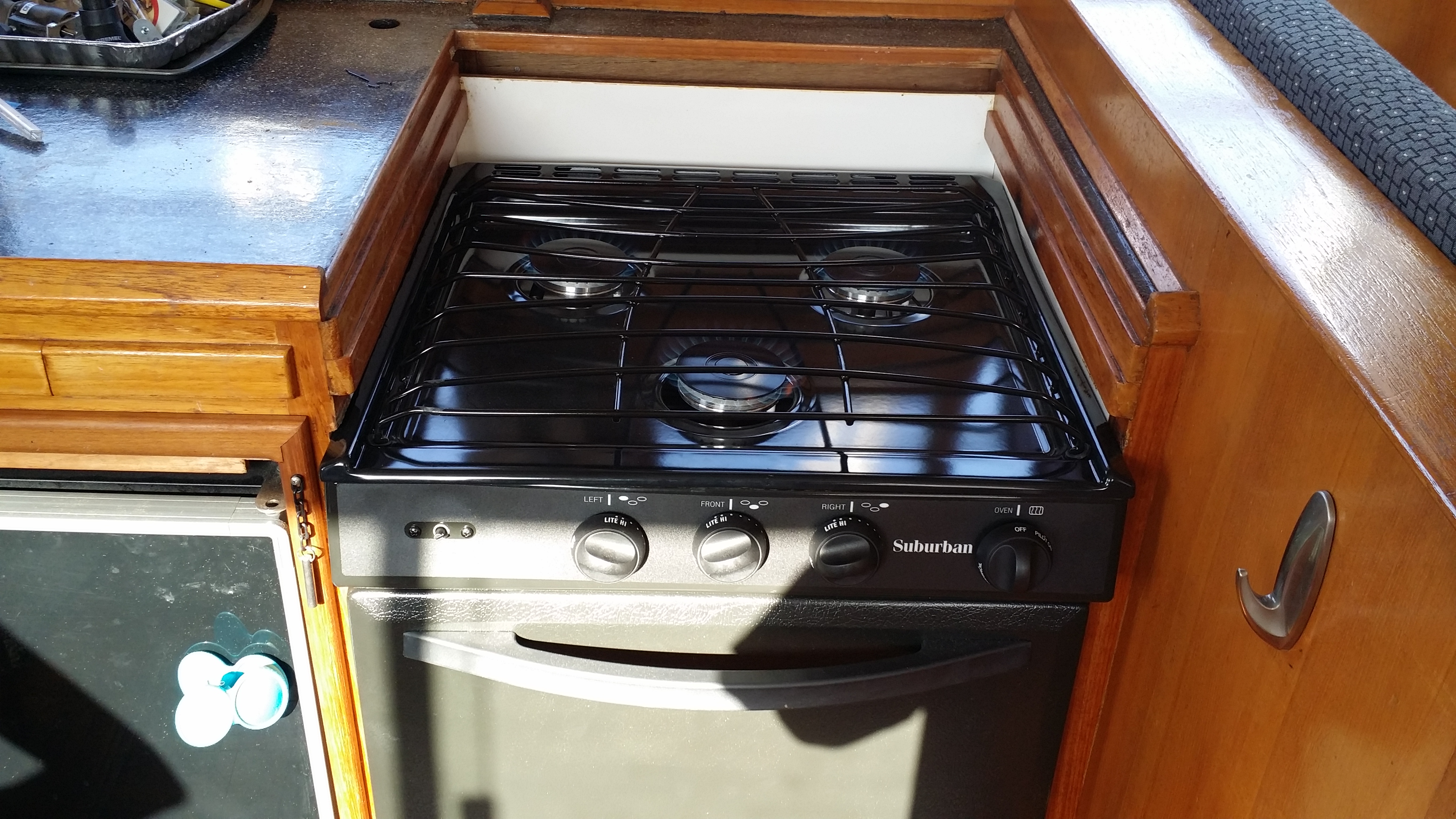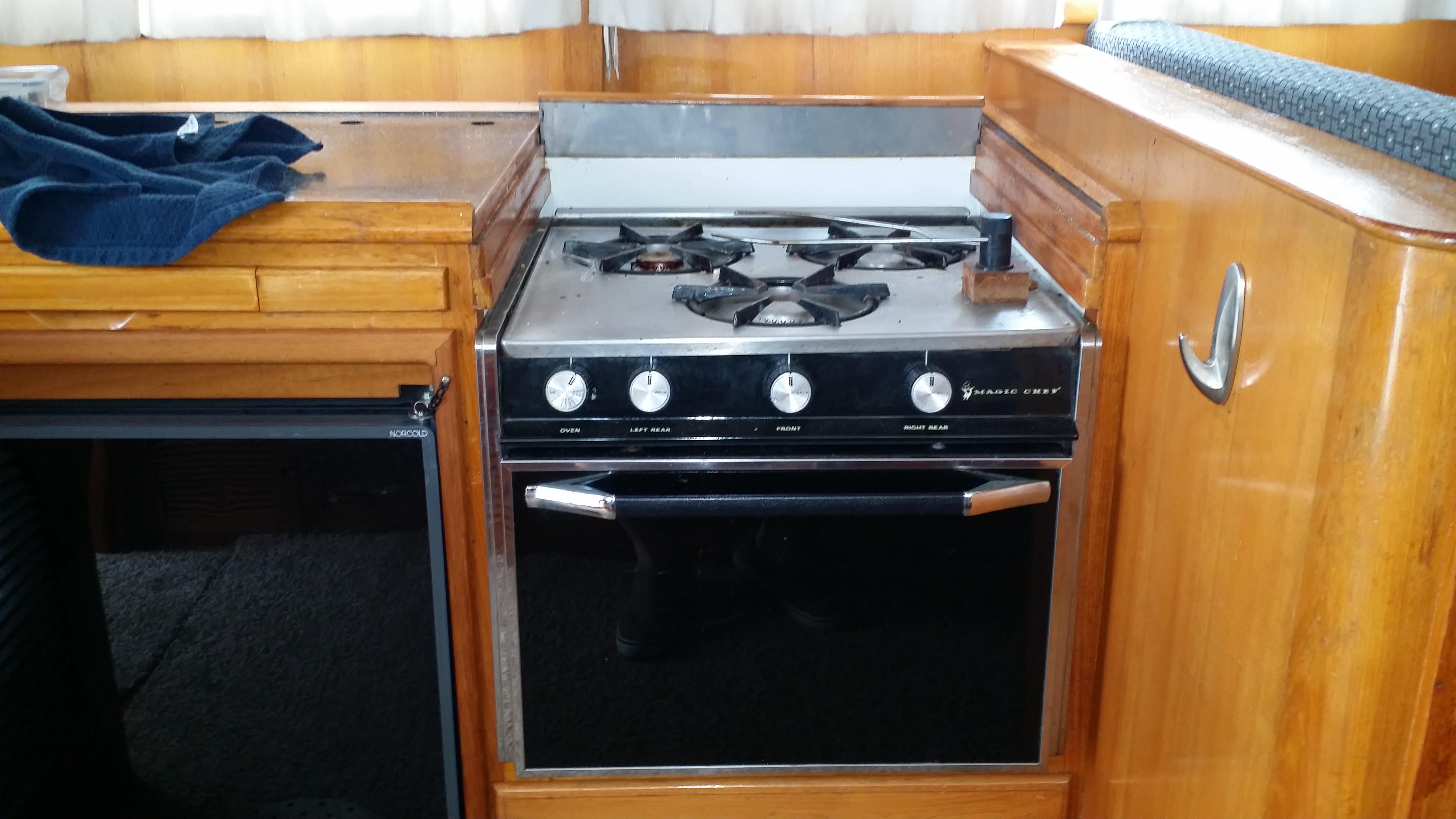mattkab
Senior Member
All:
When we bought our boat, one of the concerns found in the survey was that the existing propane range and oven did not have a thermocouple. For those that are wondering, this little device is a safety feature that will shut off the flow of propane if the flame goes out for any reason.
We've been very careful about monitoring the flame but it was beyond time to replace it, if not just for our own peace of mind.
We decided to purchase an RV model. I spent hours scouring boating forums, such as this one, and didn't find an overwhelmingly compelling reason not to: It saved us over $800 vs a marine unit, and has all the safety features. The only question is how it will hold up in the galley of a trawler -- we'll just have to see on that one, but we have many non-marine items in our cabin that hold up very well for years already.
After a few hours this weekend of woodworking, the new stove is in place, and burns hot. The old stove got picked up by someone that is going to try to upgrade it too.

In the end, if was a very straightforward project. More pictures and details on our blog
When we bought our boat, one of the concerns found in the survey was that the existing propane range and oven did not have a thermocouple. For those that are wondering, this little device is a safety feature that will shut off the flow of propane if the flame goes out for any reason.
We've been very careful about monitoring the flame but it was beyond time to replace it, if not just for our own peace of mind.
We decided to purchase an RV model. I spent hours scouring boating forums, such as this one, and didn't find an overwhelmingly compelling reason not to: It saved us over $800 vs a marine unit, and has all the safety features. The only question is how it will hold up in the galley of a trawler -- we'll just have to see on that one, but we have many non-marine items in our cabin that hold up very well for years already.
After a few hours this weekend of woodworking, the new stove is in place, and burns hot. The old stove got picked up by someone that is going to try to upgrade it too.

In the end, if was a very straightforward project. More pictures and details on our blog

